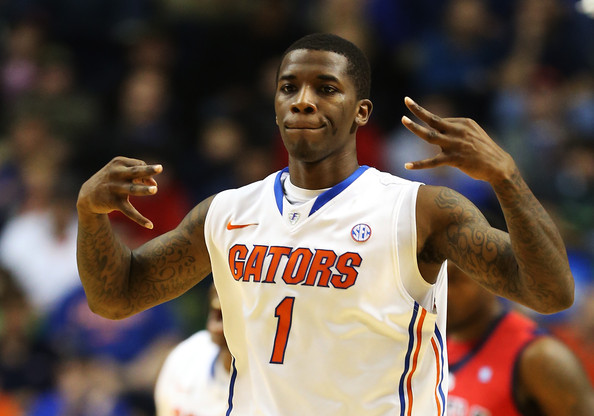Bracket Prep: South Region Analysis
Posted by KDoyle on March 18th, 2013Throughout Monday, we will roll out our region-by-region analysis on the following schedule: East (9 AM), Midwest (11 AM), South (1 PM), West (3 PM). Here, Kevin Doyle (@kldoyle11) breaks down the South Region from top to bottom. Also, be sure to follow our RTC South Region handle on Twitter for continuous updates the next two weeks (@RTCsouthregion).
You can also check out our RTC Podblast with Kevin breaking down the South Region, which will drop both on the site and on iTunes Tuesday.
South Region
Favorite: #3 Florida (26-7, 16-5 SEC). A month ago, Florida looked like it was destined for a #1 seed and primed for a Final Four run to Atlanta. The Gators were dismantling SEC teams — albeit some very weak teams — and had their potent offense clicking on all cylinders. But then Florida lost at Missouri, and then at Tennessee, and then at Kentucky. Questions began to arise, and rightly so. A team of Florida’s talent and experience should not be losing to SEC teams that will not even make the NCAA Tournament. They seemed unbeatable in the 2012 portion of the schedule, but played down to their level of competition in the SEC. That being said, it would not be smart to pick against Billy Donovan. Donovan has led Florida to the Elite Eight the past two seasons, and done so with largely the same group he has this year. Two seasons ago it was a loss to Butler as a #2-seed and last year a loss to Louisville as a #7-seed. Of their eight impact players, seven are upperclassmen and have extensive experience in the NCAA Tournament. Veteran leadership and NCAA Tournament experience cannot be discounted, and Florida has both in spades. In the “for what it’s worth” department, Pomeroy has Florida ranked #1 overall in his season-long rankings (fifth in offensive efficiency and second in defensive efficiency).
Should They Falter: #2 Georgetown (29-5, 15-5 Big East). Recent history is not on Georgetown’s side as John Thompson III has made a habit of exiting the NCAA Tournament too early. In fact, in the six NCAA Tournaments that JT3 has led the Hoyas to, they haven’t made it past the first weekend four times. The Hoyas won’t win any style points, but that doesn’t much matter. What they lack in flash they have in tough defense and methodical but effective offense. Not to mention that the Hoyas are also fortunate to have Otto Porter, the Big East Player of the Year, on their side. The emergence of Markel Starks as a second dependable scorer adds another dimension to the offense beyond him, though. Their adjusted tempo ranks 313th in the country — in other words, a snail’s pace — and inability to score in stretches on the offensive end doesn’t make them a sexy team to watch, but Georgetown is very comfortable playing grind-it-out kind of games making them an apt postseason team.
Grossly Overseeded: #7 San Diego State (22-10, 10-8 Mountain West). The Aztecs began the season with a 14-2 record and a 2-0 mark in Mountain West play, and appeared to be the class of the league alongside New Mexico. Since that blistering start, San Diego State is a pedestrian 8-8 and finished 9-7 in the MW. It is almost unfathomable that the Aztecs earned a much better seed than Pac-12 champion Oregon — prepare yourselves to hearing a lot about the Ducks’ seed in the coming days —and even a higher seed than fellow Mountain West member Colorado State. SDSU benefited from having a strong RPI (#28) and a challenging schedule which ranked in the top 20, but many prognosticators had them wearing road jerseys in their opening round game, not home whites.
Grossly Underseeded: #8 North Carolina (24-10, 14-7 ACC). After getting embarrassed by Miami and then suffering a tough road defeat to Duke, North Carolina looked like it was headed to the NIT; the Tar Heels had a 16-8 record and were just 6-5 in the ACC at the time. Roy Williams’ young group may have had unfair expectations placed on it in the preseason, but there is little doubt that they should be an NCAA Tournament team now. Their talent and maturation as a team began to show in the second half of ACC play by winning eight of their last 10 games including a narrow loss to Miami in the ACC Tournament Championship. North Carolina’s seed was hurt by having a 2-9 mark against the RPI top 50, but the way in which Carolina concluded the regular season shows that it was playing closer to the caliber of a #5 seed and shouldn’t be marred in the dreaded #8/#9 match-up with the top seed looming.














































